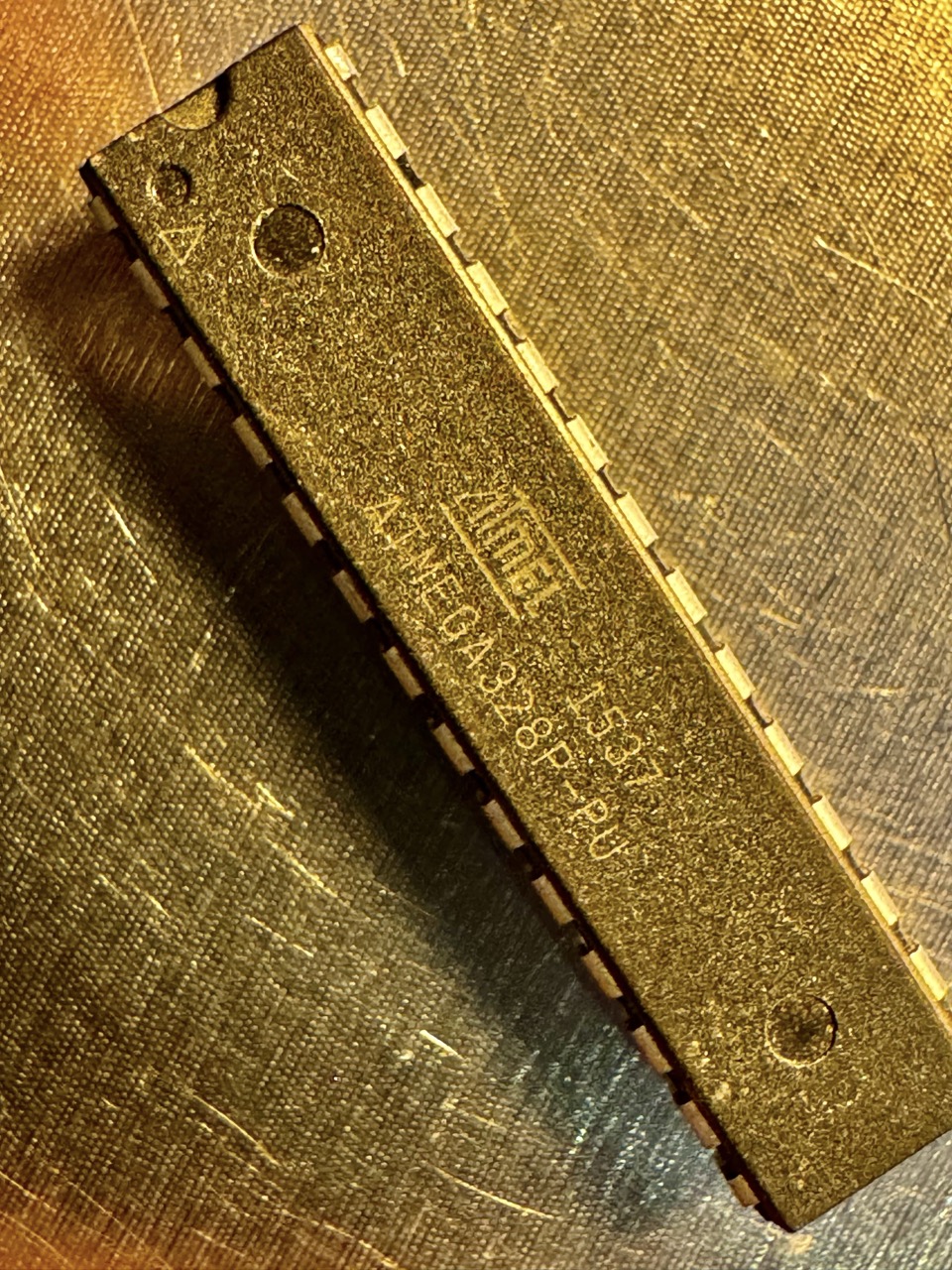Overview
The ATmega328P is an 8-bit microcontroller from Microchip Technology, renowned for its role in Arduino boards like the Arduino Uno. With robust features and low power consumption, it is ideal for embedded systems and DIY projects.
Specifications
The following specifications highlight the key features of the ATmega328P microcontroller:
- Core Architecture: 8-bit AVR, operating up to 20 MHz
- Operating Voltage: 1.8V to 5.5V
- Flash Memory: 32 KB
- SRAM: 2 KB
- EEPROM: 1 KB
- GPIO: 23 general-purpose I/O pins
- ADC: 10-bit, 6-channel ADC
- Timers: Two 8-bit timers and one 16-bit timer
- PWM: Pulse Width Modulation support
- Communication Interfaces: USART, SPI, and I2C
- Package: 28-pin DIP or other formats
Key Features
The ATmega328P offers a combination of simplicity, efficiency, and functionality, making it suitable for various embedded applications:
- Low power consumption with multiple sleep modes
- Integrated peripherals, including ADC, timers, and PWM channels
- USART, SPI, and I2C communication interfaces
- Versatility in powering options: battery or regulated DC
- Compatible with popular development tools like Arduino IDE and AVR Studio
Pinout and Functional Description
The ATmega328P features a 28-pin configuration optimized for versatile functionality. Here is an overview:
| Pin | Function |
|---|---|
| 1 (PC6/RESET) | Reset pin, can also function as GPIO |
| 2-3 (PD0-PD1) | USART communication (RX, TX) |
| 4-7 | General-purpose I/O (PORT D) |
| 8 (GND) | Ground connection |
| 9 (VCC) | Power supply (+5V or +3.3V) |
| 23-28 | Analog inputs (ADC0 to ADC5), can also serve as digital I/O |
For a complete pinout diagram, refer to the ATmega328P datasheet or the schematic of an Arduino Uno board.
Applications
Due to its versatility, the ATmega328P is widely used in numerous applications, such as:
- Home automation systems, including smart lights and thermostats
- Robotics projects, like line-following or obstacle-avoiding robots
- Environmental monitoring systems for temperature, humidity, or air quality
- DIY electronics, such as LED matrices, musical projects, and sensor integration
Programming
The ATmega328P supports multiple programming methods, making it beginner-friendly while remaining powerful for advanced users:
- Bootloader Programming: Easily programmable through the Arduino IDE using USB.
- ISP Programming: In-System Programming (ISP) using devices like USBasp or AVRISP.
Development Boards
- Arduino Uno: The most common development board for beginners.
- Arduino Nano: A compact alternative for smaller projects.
- Standalone Circuits: For custom designs using a bare ATmega328P chip.
Workflow
- Install Arduino IDE or AVR Studio based on your preference.
- Connect the ATmega328P to your computer using a USB programmer.
- Write and compile your code, then upload it to the microcontroller.
- Test and debug your application in the development environment.
